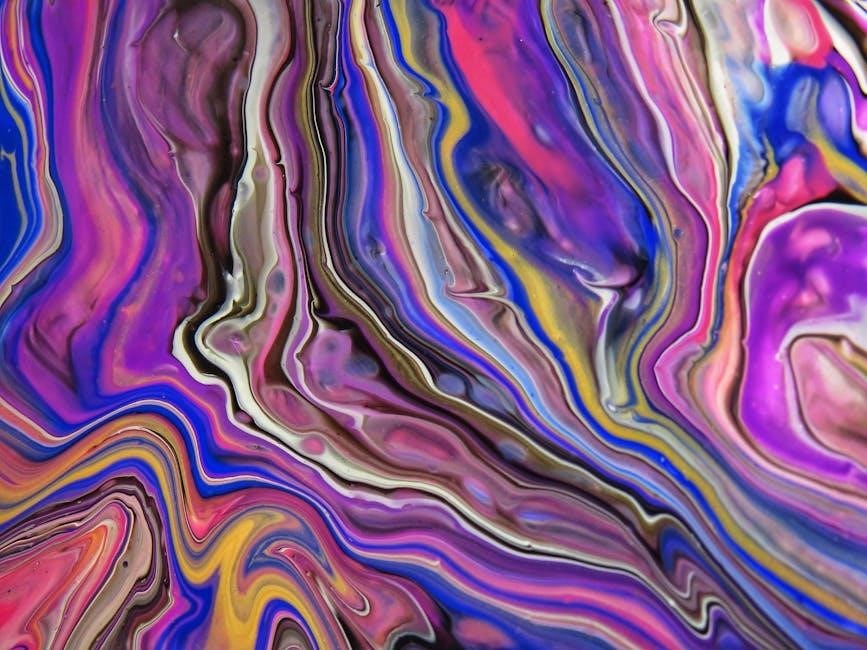Tie-dye is a resist-dyeing method creating vibrant patterns. It involves binding fabric sections before dyeing them, resulting in bold, brilliant designs. Its popularity stems from its unique effects and relatively simple techniques.
Brief Overview of Tie Dye
Tie-dye is a captivating resist-dyeing technique known for its vibrant patterns. Sections of fabric are skillfully bound, tied, or folded before dyeing. This prevents dye penetration in certain areas, crafting unique designs. This technique, accessible to beginners, produces striking and individual results. The beauty of tie-dye lies in its inherent surprises; variations in folding and dyeing lead to diverse outcomes. It transforms ordinary items into personalized works of art. From clothing to accessories, tie-dye adds a burst of color and creativity. Its adaptability makes it perfect for various projects, from decorating baby onesies to creating stylish scarves and revitalizing t-shirts. Tie-dye offers endless possibilities for self-expression and artistic exploration, making each piece a unique creation.
Historical Context of Tie Dye
Contrary to popular belief, tie-dye’s origins predate the 1960s American counterculture. Various forms of resist-dyeing have been practiced for centuries across different cultures. Notably, India, Japan, and Africa all boast long-standing traditions of tie-dye. Techniques like Shibori in Japan and Bandhani in India showcase intricate methods of binding, folding, and dyeing fabric. These ancient practices demonstrate the global appeal and enduring nature of creating patterns through resist-dyeing. These methods involve resist techniques where threads are strategically sewn into fabric patterns. The fabric is then tightened to prevent dye penetration. This rich history underscores tie-dye’s significance as a cultural art form with diverse expressions worldwide. Understanding this historical context provides a deeper appreciation for the artistry and heritage behind modern tie-dye techniques.
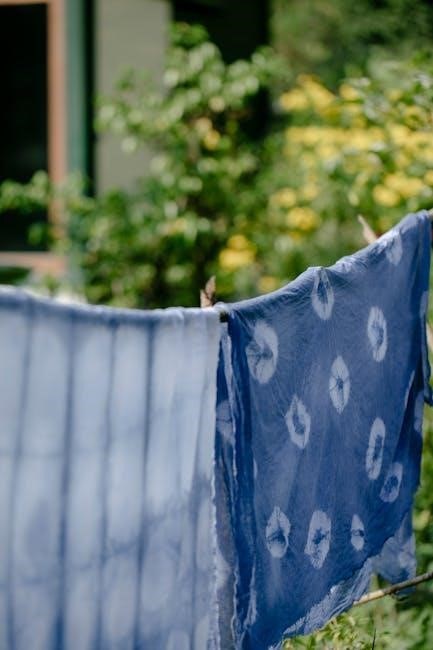
Essential Tie Dye Techniques
Basic tie-dye techniques encompass several popular methods. These include the spiral, scrunch, and stripe techniques; Mastering these techniques provides a solid foundation for exploring more complex tie-dye patterns and designs.
Spiral Tie Dye Technique
The spiral tie-dye technique is among the most recognizable and widely used methods in tie-dyeing. It produces a captivating swirl pattern emanating from a central point. To execute this technique, lay the damp fabric flat and pinch it at the desired center of the design.
Next, twirl the fabric in a flat, spiral-shaped bundle. Secure the bundle tightly with rubber bands, dividing it into pie-shaped sections. Apply dye to each section, using one color per wedge or alternating colors for a vibrant effect. Ensure the dye penetrates both sides of the fabric.
After dyeing, place the fabric in a plastic bag or wrap it in plastic wrap and let it sit for at least 4-6 hours, or preferably overnight. Rinse the fabric in cool water until the water runs clear. Wash and dry the tie-dyed item separately using hot water.
Scrunch Tie Dye Technique
The scrunch tie-dye technique, also known as crumple tie-dye, offers a more random and less structured pattern compared to the spiral. This method creates a sunburst or a free-flowing, organic design. Begin by dampening your fabric. Then, randomly scrunch and crumple the fabric together, forming a compact bundle.
Secure the scrunched bundle tightly with rubber bands, placing them haphazardly to maintain the irregular folds and creases. Apply dye directly to the scrunched fabric, allowing the dye to seep into the various nooks and crannies. Use multiple colors for a vibrant, multi-hued effect or stick to a single color for a more subtle look. Make sure to dye each side.
As with other tie-dye techniques, enclose the dyed fabric in a plastic bag or wrap and let it sit for several hours or overnight. Rinse thoroughly until the water runs clear, and then wash and dry separately;
Stripe Tie Dye Technique (Horizontal, Vertical, Diagonal)
The stripe tie-dye technique offers a structured pattern. Depending on the folding direction, you can achieve horizontal, vertical, or diagonal stripes. For horizontal stripes, accordion-fold the fabric horizontally. For vertical stripes, fold vertically, and for diagonal stripes, fold diagonally. The tighter and more precise the folds, the more defined the stripes will be.
Once folded, tightly bind the fabric with rubber bands or string at regular intervals; The spacing between the bindings will determine the width of the stripes. Submerge the bound fabric in dye, ensuring that the dye penetrates all the layers of the fabric. After dyeing, place the fabric in a plastic bag. Rinse in cool water until clear.
Wash and dry the fabric separately.
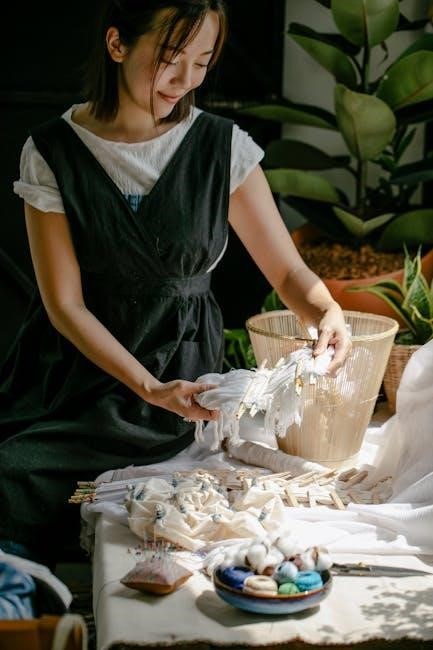
Advanced Tie Dye Techniques
Elevate your tie-dye skills with advanced techniques. These methods offer intricate designs and unique effects. Explore patterns such as mandalas and ombre gradients for complex designs.
Mandala/Kaleidoscope Tie Dye
Mandala and kaleidoscope tie-dye techniques create stunning, symmetrical patterns on fabric. This advanced method involves precise folding and strategic dye application to achieve intricate, repeating designs. The process begins with folding the fabric accordion-style, then into a triangular or square shape, depending on the desired complexity.
The folded fabric is then secured with rubber bands or string to maintain the shape during dyeing. Dyes are applied in sections, often using multiple colors to enhance the kaleidoscopic effect. The key to a successful mandala or kaleidoscope design lies in the accuracy of the folds and the thoughtful placement of colors.
Experimentation with different folding patterns and color combinations can lead to unique and mesmerizing results. This technique allows for artistic expression and the creation of personalized, eye-catching textiles. It transforms ordinary fabric into a work of art with symmetrical beauty and vibrant hues.
Ombre Tie Dye Technique
The Ombre tie-dye technique creates a gradual transition of color, from light to dark or from one hue to another. This subtle yet stylish effect is achieved through a dipping method, where fabric is gradually immersed in dye, creating a blended gradient.
To begin, the fabric is typically folded or gathered in a way that allows for controlled immersion. The lightest shade is achieved by dipping only a small portion of the fabric into a diluted dye bath for a short period. Subsequent dips involve gradually increasing the amount of fabric immersed and the dye concentration.
This process allows the color to intensify progressively, resulting in a seamless ombre effect. The final result is a beautiful gradation of color that adds depth and sophistication to the fabric. The technique is versatile, allowing for various color combinations and fabric types to create unique and personalized designs. Ombre tie-dyeing offers a modern twist on a classic art form.
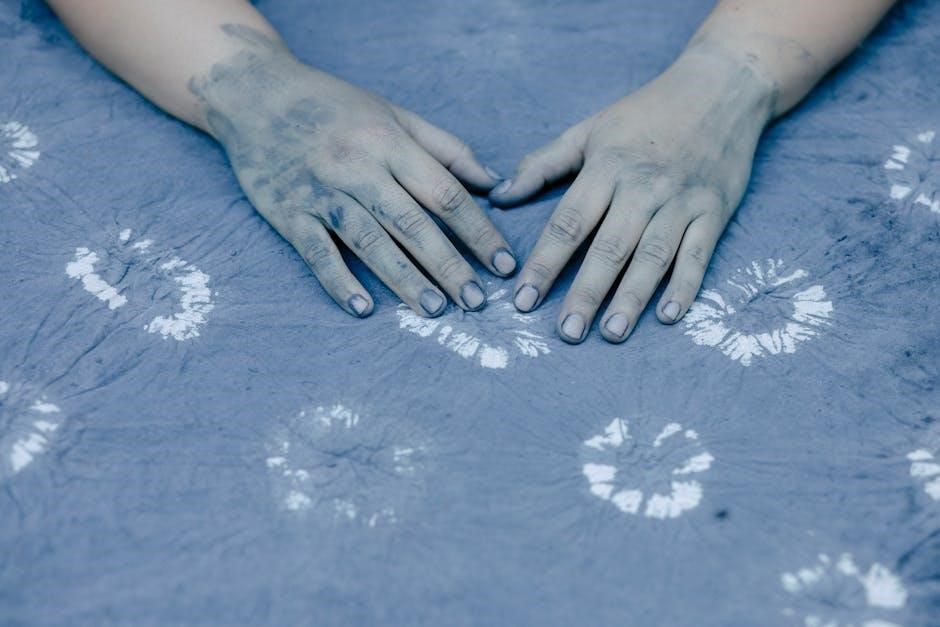
Materials and Preparation
Successful tie-dye projects require the right materials and preparation. This includes selecting suitable fabrics, gathering dyes, and preparing the work area. Proper preparation ensures vibrant results and a smooth tie-dye process.
Fabric Selection for Tie Dye
Choosing the right fabric is crucial for vibrant and lasting tie-dye results. Natural fibers like cotton, linen, wool, and silk are ideal due to their absorbency. Prewashing these fabrics removes sizing, ensuring the dye penetrates evenly. Avoid using fabric softeners, as they can hinder dye absorption.
Cotton is a popular choice for its affordability and dye receptivity. Linen offers a unique texture and vibrant color payoff. Wool and silk, while more delicate, provide luxurious results. Consider the fabric’s weight and weave; tighter weaves offer sharper designs, while looser weaves create softer, blended patterns.
Experiment with different fabrics to discover unique effects, but always prioritize natural fibers for optimal dye adherence. Pre-treating the fabric properly will also greatly influence the final design.
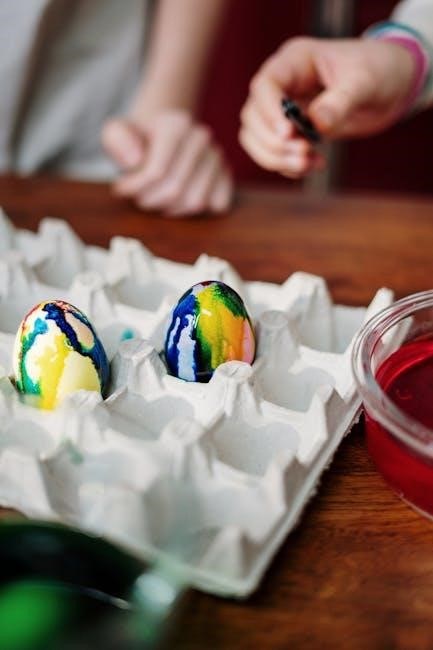
Tie Dye Safety and Best Practices
Prioritizing safety is paramount when tie-dyeing. Always work in a well-ventilated area to avoid inhaling dye particles. Wear gloves to protect your skin from staining and potential irritation. Eye protection, like goggles, is also recommended to prevent accidental splashes;
When working with dyes, follow the manufacturer’s instructions carefully. Use appropriate containers and tools to avoid spills and contamination. Ensure proper disposal of leftover dyes and rinse water, adhering to local environmental regulations. Keep dyes and chemicals out of reach of children and pets.
For best practices, pre-wash fabrics to remove any sizing or finishes that may impede dye absorption. Secure the fabric tightly with rubber bands or string to achieve crisp, defined patterns. After dyeing, rinse thoroughly in cold water until the water runs clear, then wash separately in hot water to remove excess dye and prevent color bleeding. Following these guidelines will ensure a safe and successful tie-dye experience.

